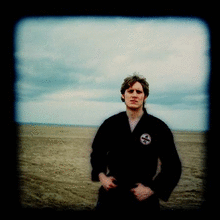Hakuda Kempo Toshu Jutsu
Toshu Jutsu (also pronounced Karate Jutsu or
Tode Jutsu) was developed on the island of Okinawa between 1500 and 1900. The old method of Toshu Jutsu
was developed by Wang Ji, Hama Higa, Takahara Peichin, Chatan Yara, and Tode Sakugawa. This was before the arts of Shuri Te,
Naha Te, Tomari Te were developed.
Contrary to popular belief these men did not study White Crane Kung Fu. The Quan (styles) taught in
Okinawa prior to 1800 including Xing-I Quan and Ba Ji Quan but it was not until Master Matsumura of Shuri began
his studies under Iwah that the door was opened to study Monk Fist Boxing (Luohan Quan) and White Crane (Pai He Quan).
The original styles of Toshu Jutsu included training in Qin Na, Qigong and the art of Emono Jutsu, weapons
or Kobudo styles not limited to the traditional Okinawan weapons but also including the Chinese Twin Swords and Straightsword.
Ancient History
The grappling and striking methods of Japan and Okinawa can be reliably traced back to the 12th century
Minamoto Dynasty, but it was in the 1600s that the methods truly became systemised arts. Minamoto Yoshimitsu (1045-1127) dissected
the corpses of men killed in battle, and studied them for the purpose of leaning vital point striking and joint locking techniques.
He is considered the founder of a branch of Jujutsu known as Aikijujutsu. Minamoto Tametomo (1139-1170) was a Samurai exiled
to Okinawa. He was the first great warrior associated with the birthplace of Toshu Jutsu.

